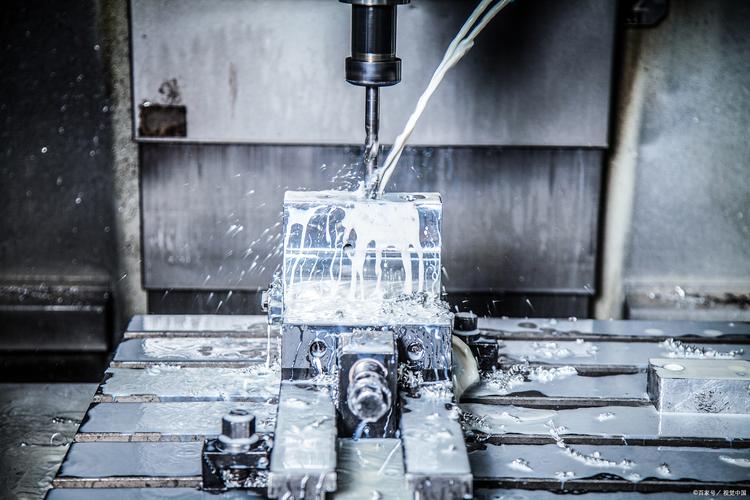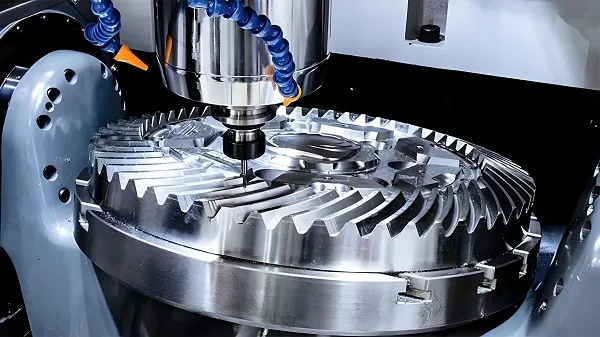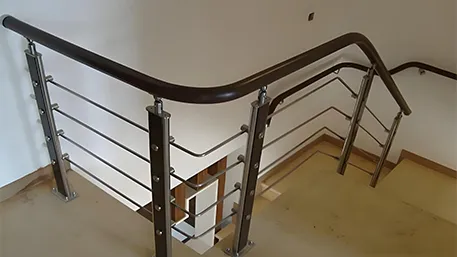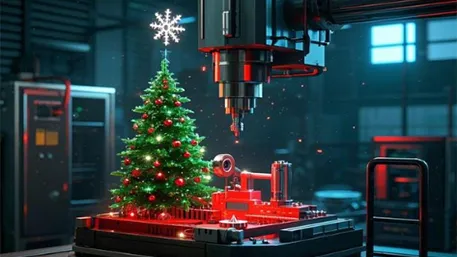Ⅰ.Precision: Unmatched Consistency in High-Precision Manufacturing
CNC’s biggest advantage lies in its ability to eliminate human error in machining. Unlike traditional manual lathes—where a worker’s fatigue, skill level, or even hand tremors can affect accuracy—CNC machines rely on pre-programmed G-code and servo motors to control tool movement, achieving positioning accuracy up to 0.001mm and repeatability ≤ 0.005mm (data from Haas Automation’s 2025 CNC Technical Report).
This precision is critical in industries where even tiny deviations lead to product failure:
- In aerospace, CNC mills produce turbine blades with 0.02mm tolerance—any error here could cause engine malfunctions at high altitudes.
- In medical device manufacturing, CNC lathes craft stainless steel surgical scissors with edge sharpness deviation < 0.01mm, ensuring consistent cutting performance in surgeries.
Ⅱ.Efficiency: Reducing Cycle Time and Labor Dependence
CNC machines drastically cut production time through two key features:
- 24/7 uninterrupted operation: Unlike manual workers who need breaks, CNC systems only require occasional material replenishment. A study by the Manufacturing Technology Association (MTA) found that CNC-equipped factories achieve 30-50% higher equipment utilization rates than those using traditional machines.
- Quick setup and batch flexibility: Changing production models only requires updating the G-code (usually 1-2 hours), while traditional lathes need 8-12 hours of tooling adjustment. For small-batch, multi-variety production (e.g., custom auto parts), CNC reduces setup time by 70%+.
Take a mid-sized auto parts factory as an example: After switching to CNC turning centers, it reduced the production cycle of a single gear from 45 minutes to 18 minutes, and cut the number of operators per machine from 2 to 1 (one worker can monitor 3-4 CNC machines simultaneously).
Ⅲ.Complexity: Enabling Intricate Designs That Manual Machining Can’t Achieve
Manual machining struggles with 3D curved surfaces, multi-axis synchronous movement, or micro-structures—but CNC machines (especially 5-axis CNC) excel at these:
- In mold manufacturing, 5-axis CNC mills carve plastic injection molds with 3D undercuts (e.g., the complex interior of a smartphone case mold) in one setup, avoiding the cumulative errors of multiple manual adjustments.
- In jewelry making, CNC routers engrave 0.1mm-thick patterns on gold rings, creating details that even skilled craftsmen can’t replicate consistently.
This capability has expanded design possibilities: For instance, Formula 1 teams now use CNC to produce lightweight, complex engine components (e.g., titanium alloy intake manifolds) that reduce vehicle weight by 15% while improving performance.
Ⅳ.Material Utilization: Minimizing Waste and Cutting Costs
CNC’s computer-aided optimization (via CAM software) calculates the most efficient cutting path, reducing material waste by 15-25% compared to manual machining.
For high-cost materials like titanium or Inconel (used in aerospace), this advantage is significant: A CNC mill processing a titanium aircraft bracket generates only 20% waste, while manual machining produces 40% waste. Over a year of producing 1,000 brackets, this saves ~(120,000 in material costs (based on titanium’s 2025 market price of )30/kg).
Ⅴ.Quality Stability: Ensuring Uniformity Across Mass Production
In mass manufacturing (e.g., producing 10,000 smartphone metal frames), CNC ensures every piece meets the same standard. Traditional manual machining often has a “first-piece good, 100th-piece defective” problem due to tool wear or operator fatigue—but CNC’s real-time tool wear monitoring (via sensors) automatically adjusts cutting parameters to maintain consistency.
A consumer electronics factory reported that after adopting CNC, the defect rate of metal phone frames dropped from 8% (manual) to 0.5%, reducing rework costs by $800,000 annually.
Ⅵ.Safety: Reducing Workplace Accidents
Manual machining exposes workers to rotating tools, flying chips, and heavy lifting—common causes of hand injuries or muscle strain. CNC machines operate in enclosed cabins with safety interlocks: If a worker opens the cabin door during operation, the machine pauses immediately.
The U.S. Bureau of Labor Statistics (BLS) data shows that factories using CNC have 60% fewer machining-related injuries than those relying on manual equipment. For example, a metal fabrication plant in Ohio saw its annual hand injury cases drop from 12 to 2 after replacing all manual lathes with CNC systems.
Q&A: What About Small Businesses—Is CNC Worth the Investment?
While CNC machines have higher upfront costs ((50,000-)500,000 for industrial models), small businesses can opt for entry-level CNC routers ((10,000-)30,000) for light work (e.g., woodworking, plastic parts). The key return on investment (ROI) comes from:
- Reduced labor costs (fewer operators needed).
- Faster order fulfillment (winning more clients).
- Lower defect rates (avoiding rework losses).
A small woodworking shop in Oregon reported recouping its $25,000 CNC router investment in 14 months by taking on custom furniture orders that manual tools couldn’t handle.
Final Thought
CNC isn’t just a “faster machine”—it’s a driver of manufacturing innovation. Its precision, efficiency, and flexibility have made it indispensable in aerospace, medical, automotive, and even creative industries (e.g., art installations). As 3D printing and AI integration advance, CNC will further evolve—but its core advantage (turning complex designs into consistent, high-quality products) will remain irreplaceable.
What challenges have you faced when switching from manual machining to CNC? Or do you have questions about choosing the right CNC machine for your needs? Feel free to share in the comments!







